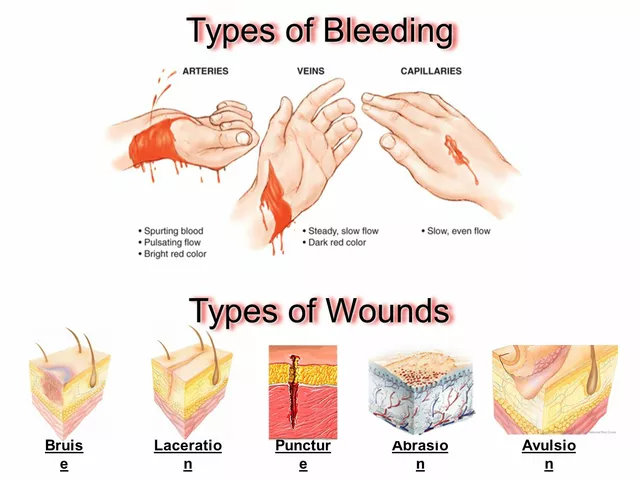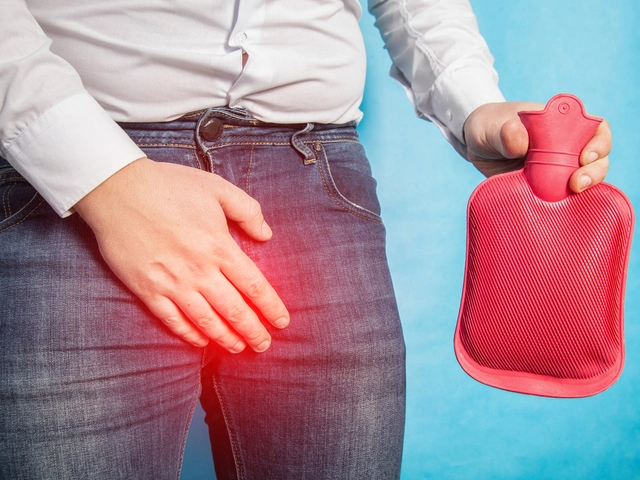Did you know that the average baby will have their first tooth break through sometime between four and seven months? When that day comes, it usually doesn’t bring a quiet, smiling face. No, it’s the full red-eyed, finger-in-mouth, drooly display that has you scrambling for a fix. But not every remedy is created equal, and some teething relief products can give you a whole new headache. Below, you’ll find what matters when making the right call for your baby—and your sanity.
The Science of Teething: What’s Actually Happening?
Some people think teething is just about teeth poking through gums, but it’s actually a whole process—one that starts way before you see any white capping on your baby’s gums. The roots start pushing down, nerves get pressured, and inflammation kicks in. That’s why your baby can suddenly turn into a fountain of drool and seem to gnaw on everything in sight. During this time, some babies will develop red cheeks, get a slight temperature uptick, or even have trouble sleeping. While it’s tempting to blame every cry or fever on teething, experts like the Royal Children's Hospital in Melbourne remind us, “Teething does not cause high fever or severe diarrhea. If your baby is very unwell, look for other causes.”
This process triggers changes in behavior: fussiness, clinginess, biting, and interrupted sleep. It’s not just discomfort; your baby’s oral sensations get weird as the gums swell and the teeth press up from underneath. One study from the Journal of Pediatric Health Care found that 70% of babies experience increased dribbling, and about 55% show gnawing on objects. Some parents swear their baby gets an ear infection every time a tooth’s about to appear, but most studies find little evidence linking ear illnesses to teething alone.
Here’s a quick breakdown of typical teething ages and symptoms:
| Age Range (months) | Common Symptoms |
|---|---|
| 4–7 | Excess drooling, gum swelling, irritability |
| 7–12 | Mild temperature, disrupted sleep, gnawing habits |
| 13–19 | Mood swings, chewing solid food harder |
Understanding these basics helps you sift through which products actually help and which ones just ride the wave of anxious parenting. If you know what’s happening under your baby’s gums, you’re ready to figure out how to give comfort—without making things worse.
The Wild World of Teething Products: What’s Out There?
Walk through the baby aisle of any supermarket in Australia, and you’ll see a wild array of solutions promising relief. The market is absolutely exploding. Chew toys, gels, powders, tablets, necklaces, and homeopathic drops all fight for a chunk of your wallet. But are they any good? Let’s break down what’s on offer and the facts parents should know.
Chilled teething rings are probably the MVP when it comes to tried-and-true remedies. Medical experts almost always mention them. Chilling—not freezing—helps numb your baby’s gum pain naturally. Look for BPA-free and phthalate-free options. Avoid putting anything in the freezer, as rock-hard items can hurt delicate mouths. Silicone or natural rubber is usually a safer pick compared to plastics. Next up, there are hundreds of differently shaped teething toys. The best designs are easy to clean, with no tiny parts that could break off.
Then you’ve got gels and creams. In Australia, some over-the-counter teething gels contain a mild local anesthetic like lignocaine (also known as lidocaine). The Therapeutic Goods Administration (TGA) warns that these should be used sparingly and only on professional advice, since overdosing can make babies seriously ill. Gels with benzocaine, still sold in some countries, are flat-out banned for under-twos by the US FDA, citing the risk of methemoglobinemia—a blood disorder. Natural teething gels using herbs like chamomile or vanilla are pitched as gentler, but there’s little concrete research backing their effectiveness or safety.
What about teething biscuits? Some biscuits designed for teething babies dissolve in the mouth and relieve chewing urges, but many are loaded with sugar or salt, which isn’t great for brand-new teeth or bellies. Always check the ingredients, and never leave babies unsupervised with food-based teethers due to choking risks.
Necklaces or bracelets made from amber or silicone are heavily advertised as miracle cures thanks to “releasing succinic acid” or “natural soothing properties.” Medical organizations, including Raising Children Network, say there’s zero scientific proof they work. Worse: they can be dangerous, leading to choking or strangulation. Even if a well-meaning friend swears by them, it’s smart to keep those away from your baby.
So, here’s where you stand: teething pain relief spans a dizzying range of shapes, colors, and ingredients, but only a handful actually target what’s happening in your baby’s mouth. Picking the right one means knowing what matters most for safety and comfort.

Spotting Safe and Effective Teething Remedies
The good news? You don’t need a medical degree to untangle the best choices from the dodgy ones. When it comes to teething pain, every parent wants quick relief—but safety can’t take a backseat. Start with the basics: any product your baby can bite or suck on must be too big to swallow, solid enough it won’t break into pieces, and easy to clean. Look for simple, proven designs. Avoid anything with beads, cords, or loose attachments. Chilled, solid teething rings or toys still top the list, especially when made of medical-grade silicone.
The Royal Australian College of General Practitioners outlines a simple safety checklist you can apply to any teething product: “Check for non-toxic materials, no risk of breakage, and ease of cleaning. Avoid items worn around the neck or hand.” Sound boring? Your baby won’t notice the difference, but you’ll absolutely notice fewer frantic searches for missing beads in the play rug.
What about topical gels and oral solutions? Here’s where extra caution is key. The TGA has found some imported products online containing banned or undisclosed ingredients. Stick to trusted pharmacy brands, and listen to your GP or pharmacist before trying anything beyond what the packet recommends. Over-the-counter gels should carry the Australian Register of Therapeutic Goods number (ARTG) on the box. If you’re not sure what’s in the bottle, ask before using. Never use home remedies like alcohol, honey, or herbal drops unless cleared by a doctor. Babies under one year can get severe illness from things adults handle just fine.
Natural rubber and wooden teething toys might feel ‘eco’, but check for splinter risk and bacterial buildup. Silicone is often easier to sterilize and holds up better in the dishwasher. If your baby prefers cold items, try popping a clean, damp washcloth in the fridge (not the freezer) and letting them chew on that. It’s old-school, but pediatricians still recommend this trick for short periods.
For those looking at homeopathic and herbal options, keep in mind strict regulations: the TGA does not require the same rigorous testing for these products as it does for mainstream medicines. That means the “natural” label might say more about marketing than science.
“There is no strong evidence that homeopathic teething remedies help with pain, and some have been recalled due to safety concerns,”according to Dr. Lauren Block, a pediatrician cited by BabyCenter.
The most important thing: if something feels risky or untested, don’t use it just because a friend’s cousin swears by it. Your baby’s safety is the best priority on the shelf.
What Really Works for Teething Pain? Evidence-Based Tips
Chasing magic cures can get exhausting. So which products have research and real-world experience to back them up? Turns out, most pediatric experts agree that simplicity still wins. The best teething pain relief doesn’t have to be complicated or expensive. According to the Australian Dental Association, the most effective remedies focus on easing pressure and soothing irritated gums, not on adding chemicals or fancy gimmicks.
Cooled (not frozen) teethers, gentle gum massage with a clean finger, and distraction with singing or play all get the nod. Some parents improvise by giving their baby a chilled (not frozen) cucumber stick or carrot to gnaw under supervision—just keep a hawk’s eye out for choking. Products focusing on cold sensation, gentle resistance, and safe chewing top the success charts. Regularly sanitizing toys and washcloths prevents infections while your baby soothes sore spots.
For sleepless nights, many parents are tempted to try painkillers. Paracetamol (like Panadol) can be used for short periods if your baby is especially miserable and older than two months—just stick to dosages recommended by your child’s doctor. Avoid aspirin or adult painkillers; they can do far more harm than good. If you notice redness, swelling that won’t stop, or a fever over 38°C, talk to your GP—teething should not trigger high fevers or severe rashes. Every baby is different: some breeze through teething, while others feel every last bump and grind of tooth eruption.
Monitoring your baby’s behavior and tracking which products provide relief is a practical approach. There’s no one-size-fits-all, but there is a short list of what stands up over time, including:
- Chilled silicone or rubber teething rings/toys
- Cold, damp washcloth for supervised chewing
- Gentle gum massage with a clean finger
- Using paracetamol for acute pain when recommended by your GP
- Offering safe, age-appropriate food for chewing if your baby is old enough
- Maintaining regular oral hygiene by wiping gums with a clean cloth
Here’s a handy table on what to avoid, based on warnings from the TGA and Australian Dental Association:
| Product Type | Why to Avoid |
|---|---|
| Benzocaine gels | Risk of serious side effects in young children; not approved for under-2s |
| Amber necklaces | Choking and strangulation risk |
| Frozen or hard teethers | Can damage gums and teeth; risk of oral injury |
| Homeopathic pills (unregulated) | Safety not proven, some recalled due to contamination |
| Food-based teethers (unsupervised) | Choking hazard |
If you need backup, your local pharmacist usually knows what’s safest and up-to-date, especially in places like Melbourne where the regulations can change quickly.

Questions to Ask Before Picking a Teething Pain Relief Product
Walking into the pharmacy or browsing online late at night, it’s too easy to grab whatever’s got the brightest packaging or the most reviews. But with all the choices and all the marketing speak, taking a minute to think through your selection can pay off. Here are a few straight-up questions to answer before making a choice for your baby’s teething pain:
- Is the product size suitable for my baby’s age? Remember, it should be too big to swallow, not small enough to choke on.
- What’s the product made from? Check for BPA-free, phthalate-free materials that are easy to wash and sterilize. Look for recognized Australian safety logos where relevant.
- Can the item break, splinter, or come apart easily? If so, skip it.
- Does the product make wild claims? “Guaranteed pain-free teething” or “miracle relief” usually deserve skepticism.
- Is the product approved by a respected health authority? An ARTG number or recommendation from your GP or pharmacist means you’re on solid ground.
- Does the product require supervision (especially with food-based teethers or any wearable items)? If yes, be realistic about your ability to watch your baby.
- Is there a clear return or complaint process in case something’s wrong?
- Will the item fit into your cleaning routine? Some toys have tricky nooks that are breeding grounds for mold or bacteria.
It boils down to clearly weighing the benefit against the risk, making choices based on real data, not pressure from other parents or influencers. If a new product pops up on your Instagram feed claiming to be “a game-changer for teething pain,” look for mentions from the Australian Dental Association or other legitimate health sources. Baby gums are more delicate than you might realize, so a little caution goes a long way.
At the end of the day, remember: you already know your baby better than anyone else does. You’ll spot what helps and what doesn’t. Stay skeptical, stay curious, and trust that safe, simple solutions usually do the job. And next time the teething crankiness hits, you’ll be ahead of the game—armed with trusted information, not just hope in a bottle.





Annie Tian
Chilled silicone teething rings are a real lifesaver, especially when you need something that won’t shatter on a tiny mouth; look for medical‑grade, BPA‑free material, and you’ll have peace of mind, too. Pair the ring with a gentle gum massage, and you’ll notice a sharp drop in fussiness. Consistency is key, and the baby will learn to self‑soothe faster than you think.
April Knof
In Australia the guidelines emphasize BPA‑free, phthalate‑free toys and stress the importance of a product’s ARTG number; many U.S. parents overlook this because the labeling system differs. When you compare the TGA’s warnings with the FDA’s ban on benzocaine gels, you see a clear pattern: safety standards are stricter down under. Picking a product that meets both sets of rules can save you a lot of hassle later.
Tina Johnson
While cross‑referencing regulations is useful, the article overstresses the differences without acknowledging that most reputable brands already comply with both agencies. Parents don’t need to become regulatory experts; they just need to look for the certification marks and follow pediatrician advice.
Sharon Cohen
Even though chilled rings are praised, the hype around natural gels often masks the fact that many of them contain undisclosed menthol or eucalyptus oils, which can irritate sensitive gums. A single drop of a strong essential oil may cause more pain than relief, especially for newborns.
Rebecca Mikell
That’s a fair point; to keep things safe, stick to plain silicone rings and avoid any additives unless a doctor explicitly approves them. Simplicity usually wins, and it’s easier to sterilize a plain ring after each use.
Ellie Hartman
For parents looking for a budget‑friendly option, a clean, damp washcloth placed in the fridge works surprisingly well; it’s soft, easy to sanitize, and the cold provides the same soothing effect as a silicone toy. Just be sure the cloth is free of chemicals and supervise the baby at all times.
Alyssa Griffiths
What most retailers don’t tell you is that some “herbal” gels are manufactured in facilities that also process pesticides, leading to trace contamination; the lack of third‑party testing is a red flag that should set off alarms for any vigilant caregiver. In short, if the label doesn’t list every ingredient down to the microgram, walk away.
Jason Divinity
One must not underestimate the gravity of employing substandard teething aids; the consequences range from minor gingival irritation to potentially life‑threatening methemoglobinemia, a condition that has historically been linked to unregulated benzocaine preparations. It is incumbent upon caregivers to demand products bearing the Australian Register of Therapeutic Goods (ARTG) seal, thereby ensuring compliance with stringent pharmacovigilance protocols.
andrew parsons
🔍🚫 Using anything without an ARTG number is essentially flirting with danger; it’s a moral obligation to protect our children from rogue manufacturers who prioritize profit over safety. Let’s hold each other accountable and share only vetted, certified options! 👍
Sarah Arnold
When teething hits, the first thing you want is quick, reliable relief 🌟. A chilled silicone ring does exactly that by numbing the gums without any chemicals, and it’s safe for daily use 🧊. Pair it with a gentle finger massage; the pressure helps push fluid away from inflamed tissue and can calm the baby within minutes. If you’re over the age of two months, a pediatrician‑approved dose of paracetamol can be added for especially tough nights, but always follow the dosage guidelines 📏. Avoid any product that contains benzocaine or lignocaine unless a doctor specifically prescribes it, because the risk of methemoglobinemia is real and documented 📛. Natural gels that claim “herbal” benefits often hide menthol, eucalyptus, or even alcohol, which can worsen irritation rather than soothe it 🛑. Amber necklaces and other wearable “miracle” items are not only ineffective, they pose choking and strangulation hazards – keep them out of reach 🪢. Simple home remedies like a cold, damp washcloth are surprisingly effective; just make sure it’s clean and supervise the baby at all times 🧼. For older infants who can handle solid foods, introducing chilled cucumber sticks or carrot spears can satisfy the gnawing urge while providing extra nutrients 🥒🥕. Remember to sterilize all toys regularly; a dishwasher‑safe silicone ring withstands high heat and eliminates bacterial buildup 🧽. Keep a log of what works and what doesn’t – noting the time of day, duration of calmness, and any side effects can help you fine‑tune the best approach 📊. Your pediatrician can also recommend specific brands that have passed the Australian Register of Therapeutic Goods audit, ensuring they meet safety standards ✅. If a product’s packaging looks flashy but lacks clear safety markings, trust your instincts and set it aside 🙅♀️. Community forums can be helpful, but always cross‑reference advice with reputable medical sources before trying a new remedy 🌐. Finally, stay patient; teething is a phase, and with the right tools, both you and your baby will get through it with fewer tears and more smiles 😊.
Rajat Sangroy
Don’t let the fear of a few extra minutes of crying paralyze you – a solid, chilled teether does the trick, and a quick dose of paracetamol when needed keeps everyone sane.
dany prayogo
Oh, absolutely, because the world has clearly been waiting for a 16‑sentence Reddit essay to tell us that a cold washcloth works – how novel! While the long list of “do’s and don’ts” sounds impressive, most parents just want something that stops the crying without a chemistry degree. The fact that you need to memorize ARTARTG numbers and chemical names is a testament to how over‑engineered baby care has become. If you have to check a chart for every product, maybe just stick to the basics: cold, clean, and safe. The emphasis on “no amber necklaces” is a relief; we’ve all seen those Instagram posts promising miracle cures that turn into choking hazards. And yes, a dash of paracetamol when the baby is truly miserable is fine, but let’s not forget that over‑medicating is a separate nightmare. The simple truth is that babies love to chew, and anything that satisfies that urge without chemicals is a winner. So, while the exhaustive tables are interesting, they’re also a bit of a snoozefest. A quick glance at the packaging for the ARTG number, a rinse in the dishwasher, and you’re good to go. In short, the “evidence‑based” approach is great, but don’t let it turn into analysis paralysis.
Wilda Prima Putri
Sure, a teething necklace sounds cute, but it’s a choking hazard.
Edd Dan
i think the best way is to keep it simple and watch the baby, dont overthink it
Cierra Nakakura
Hey parents! 😃 Give those teething rings a quick chill in the fridge and let your little one gnaw away – it works wonders! Just remember to clean them regularly so the germs don’t crash the party. 🎉
Sharif Ahmed
In the grand tapestry of infant development, teething is but a fleeting brushstroke of discomfort, yet it offers a profound glimpse into the primal struggle between emerging dentition and tender gingiva, demanding our most discerning selection of remedies.